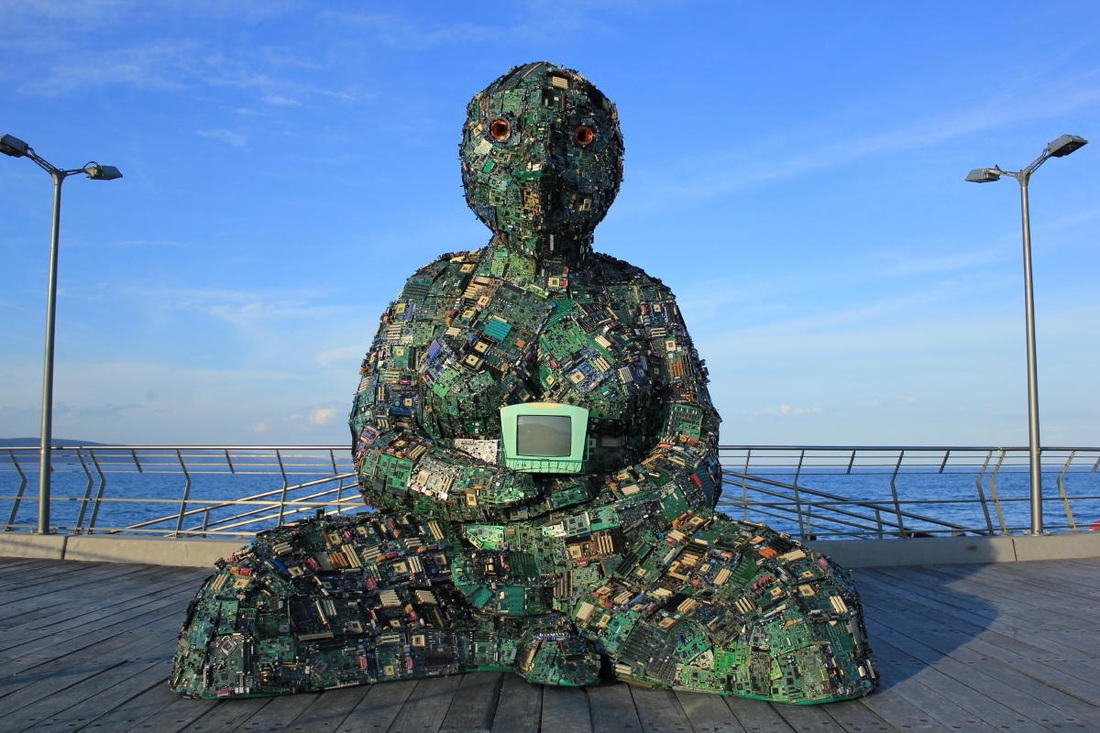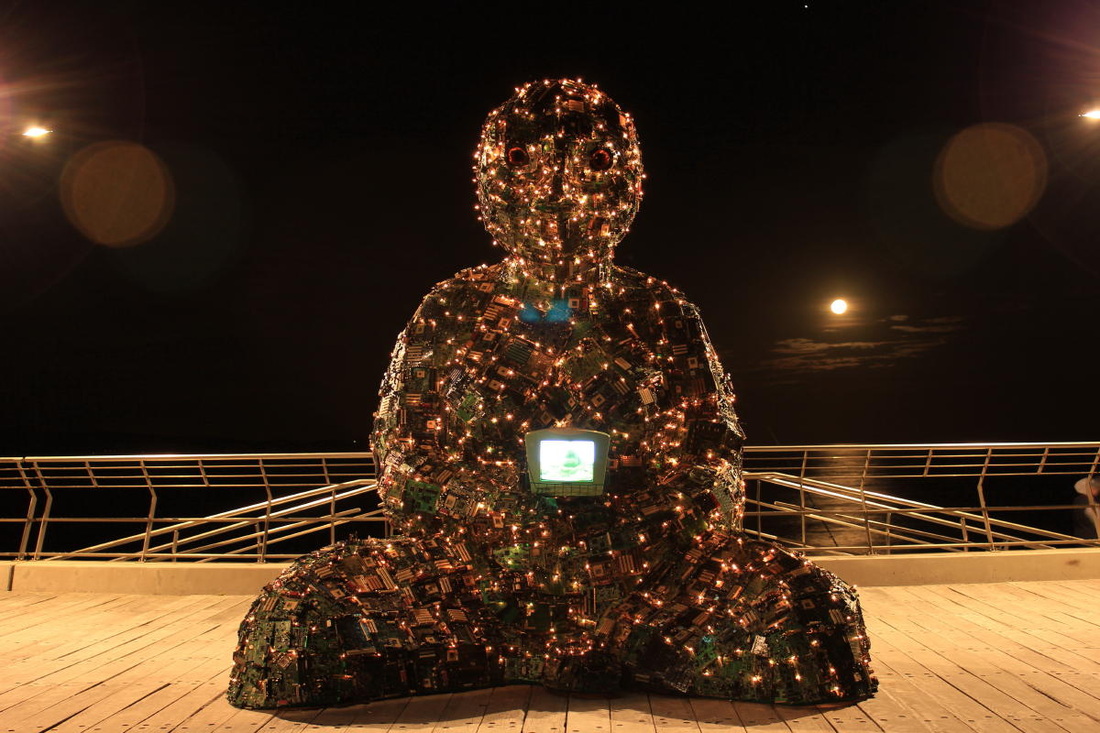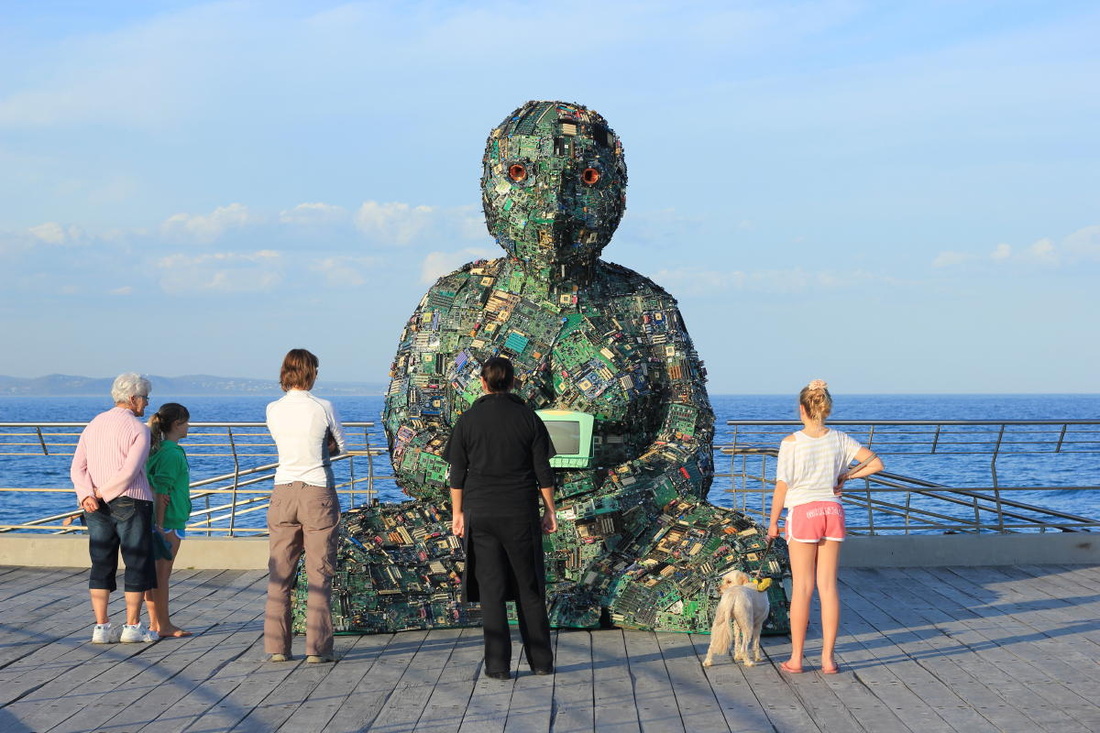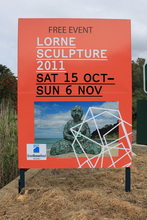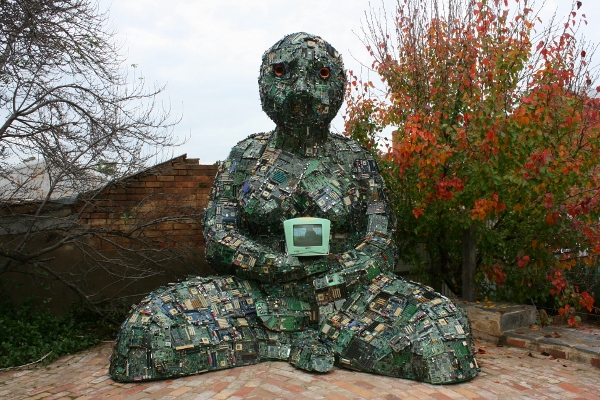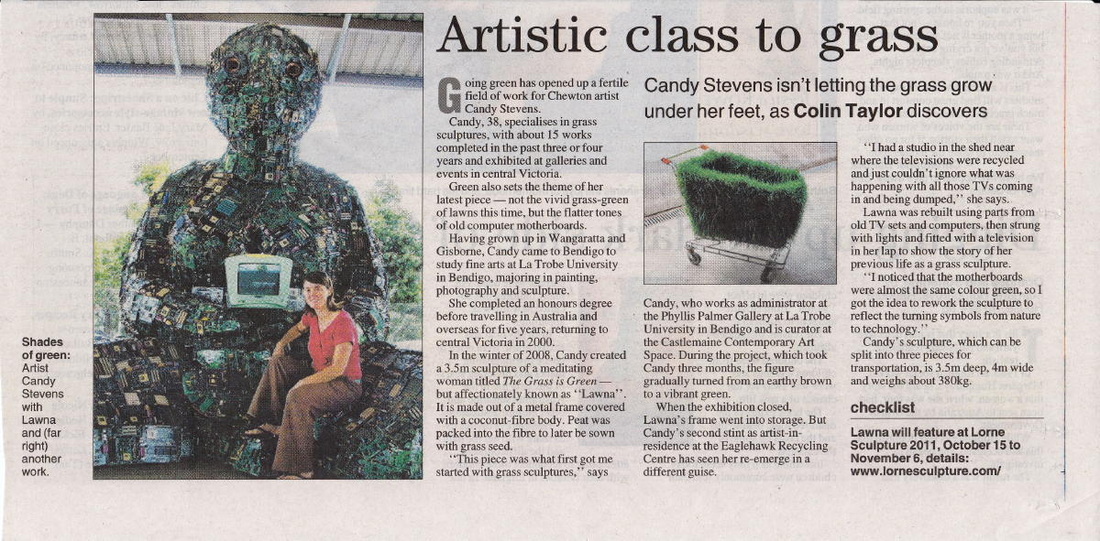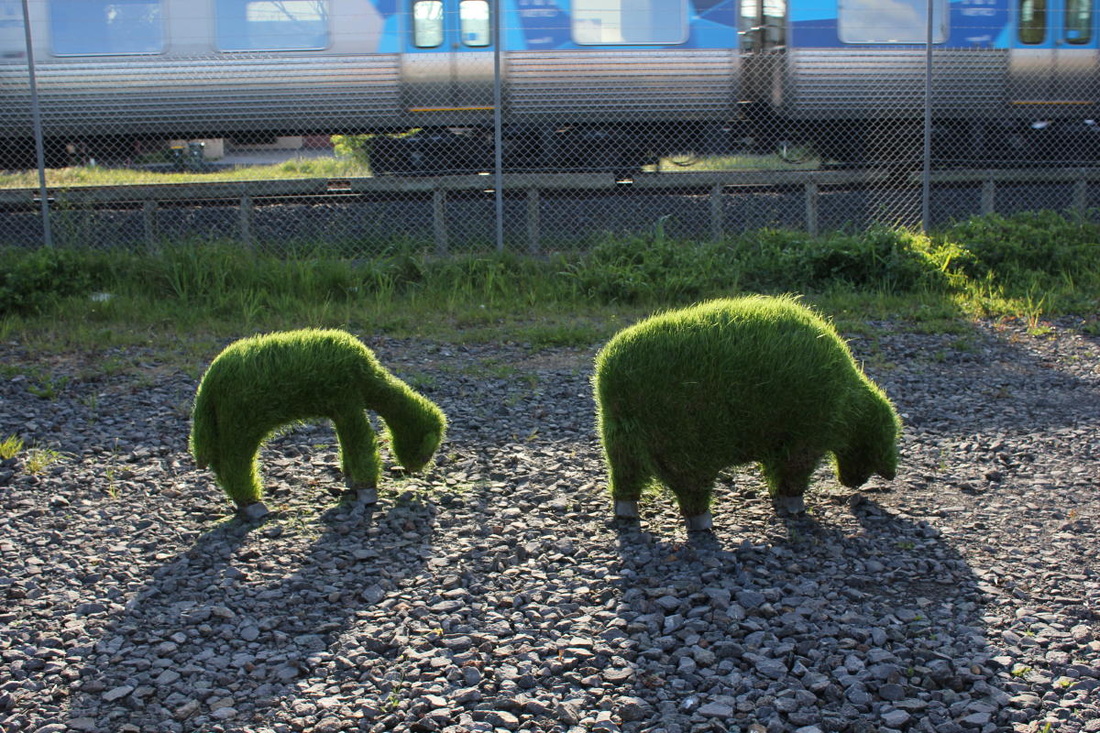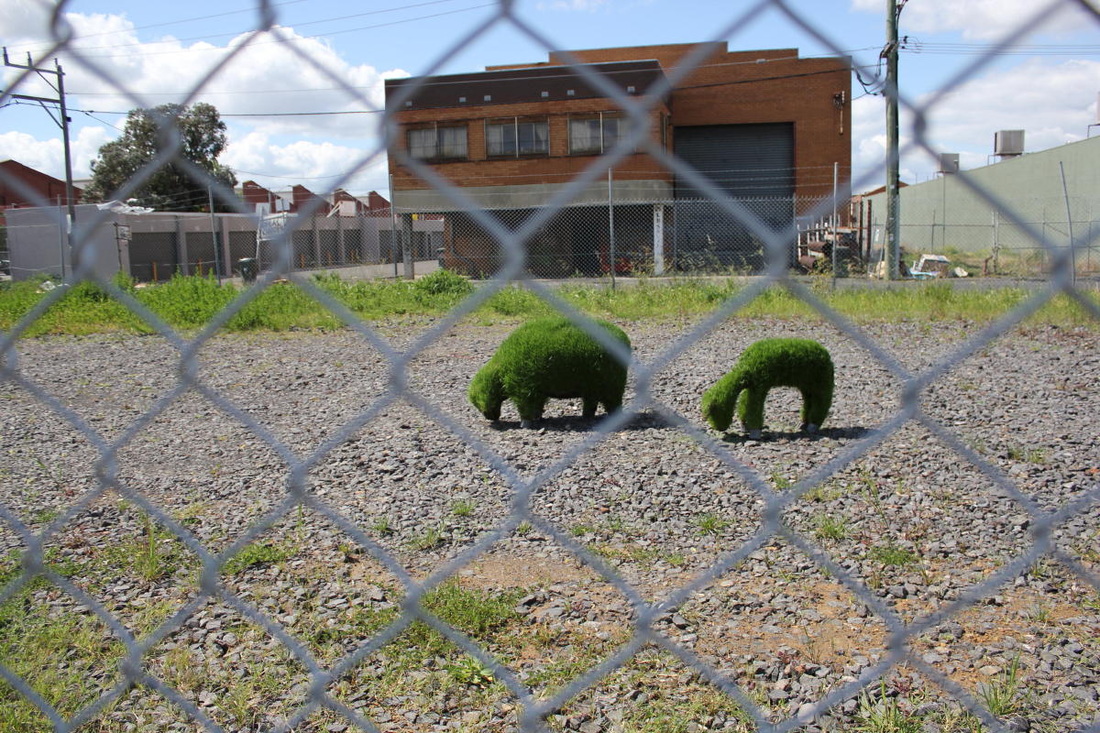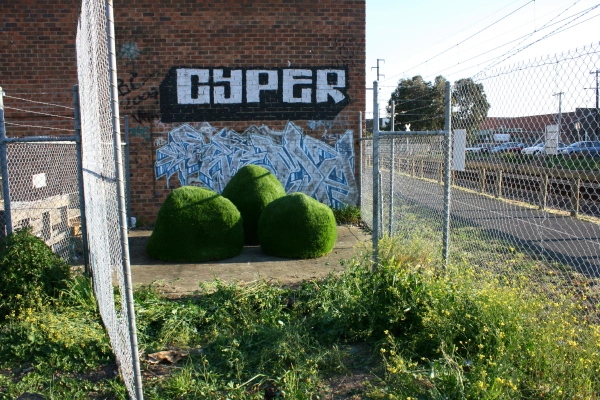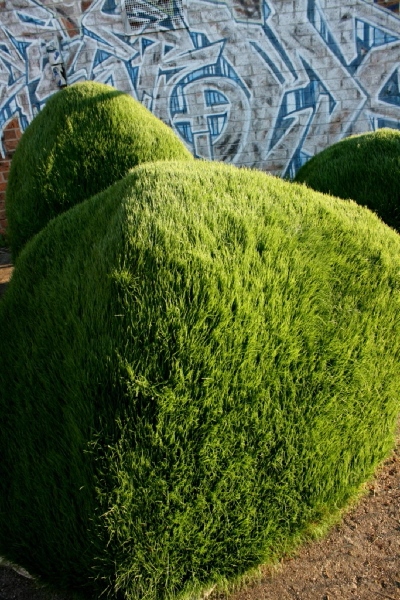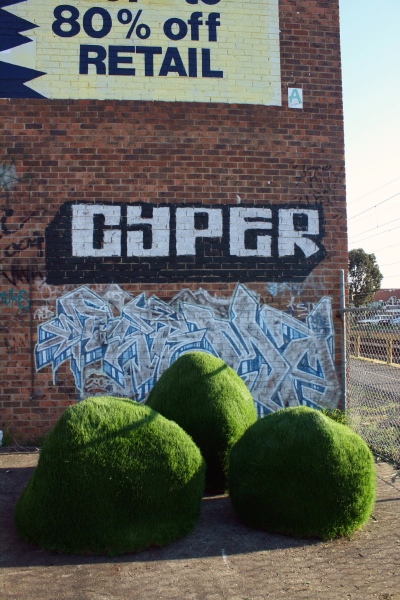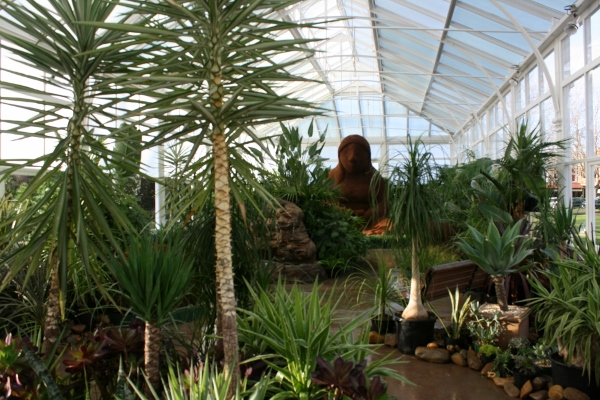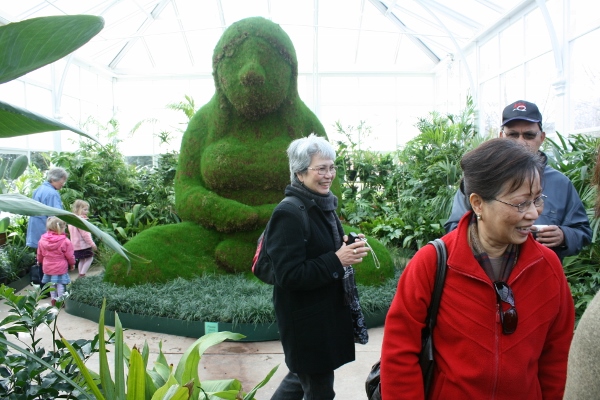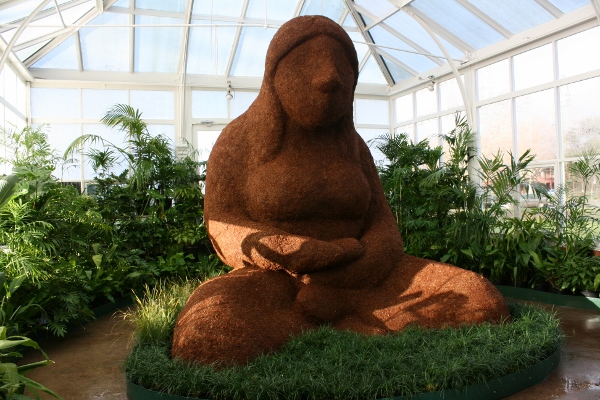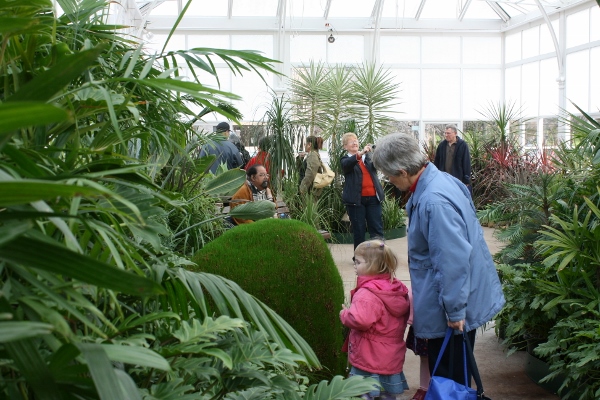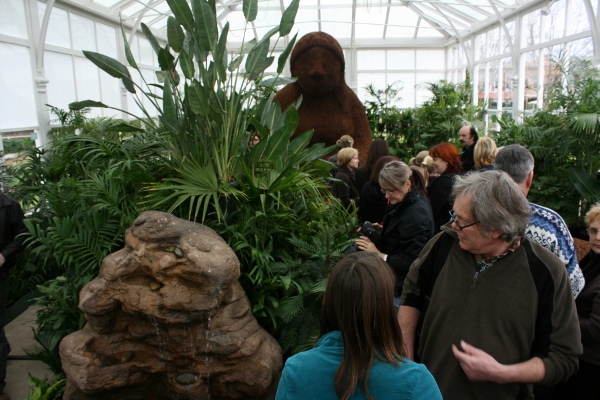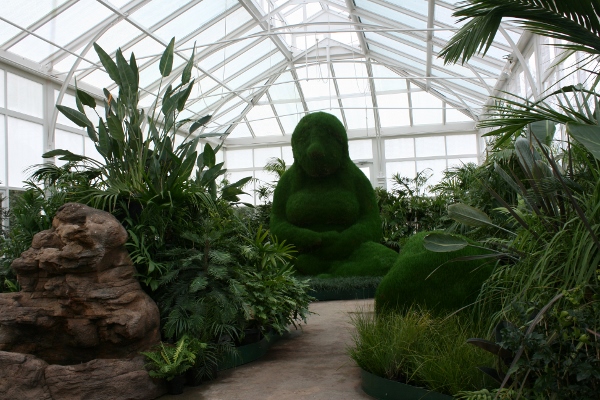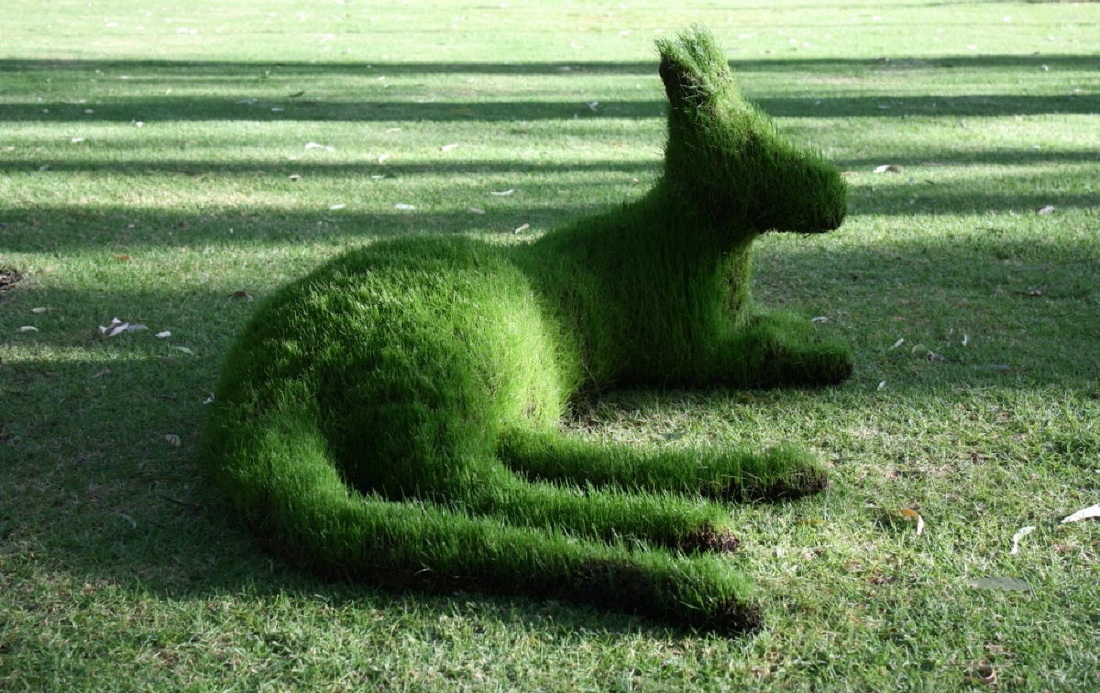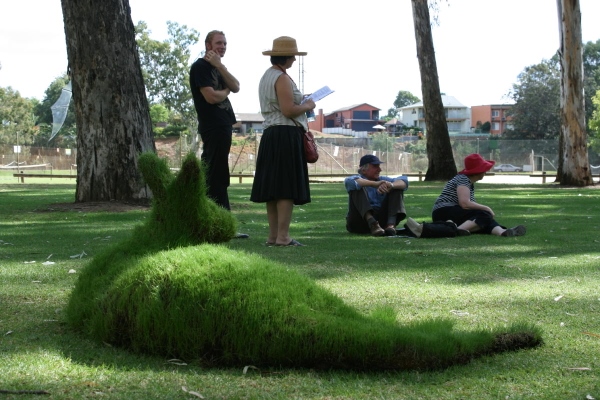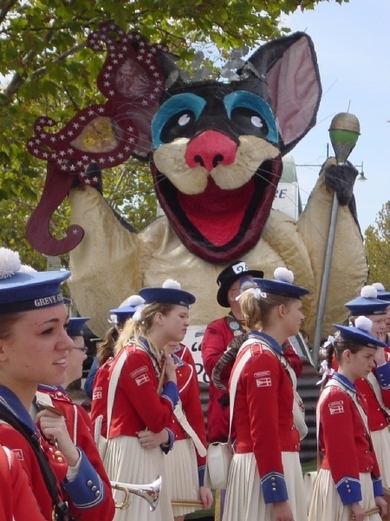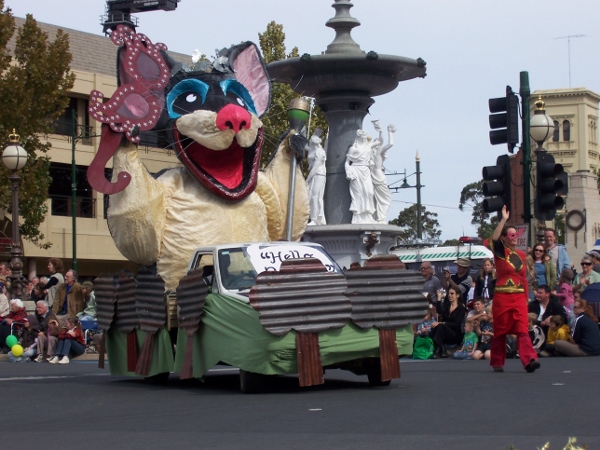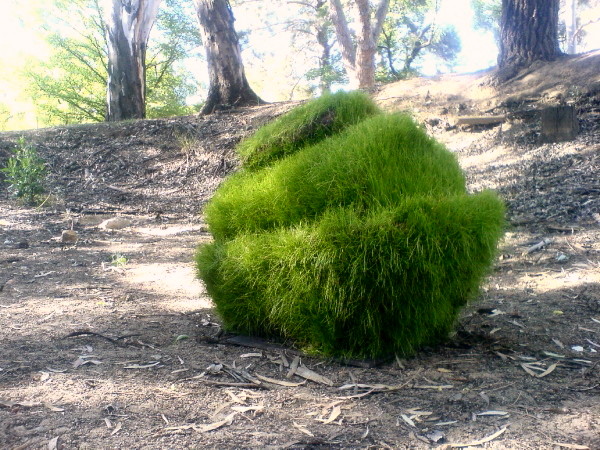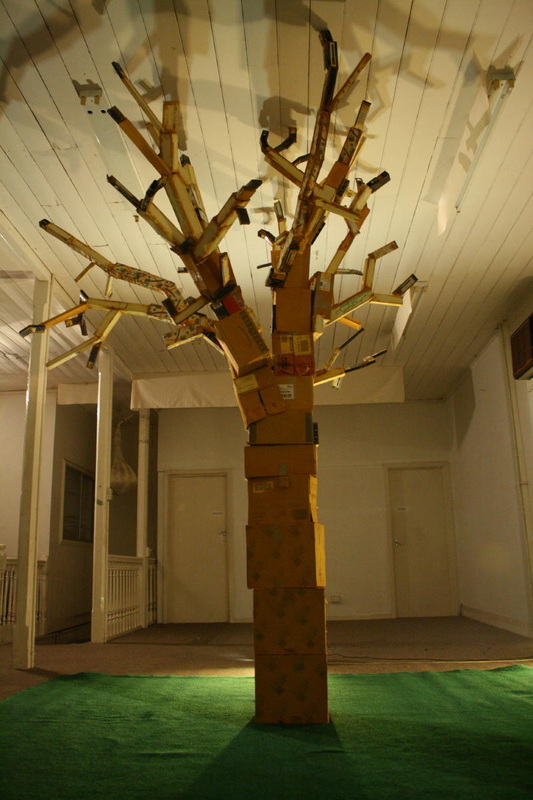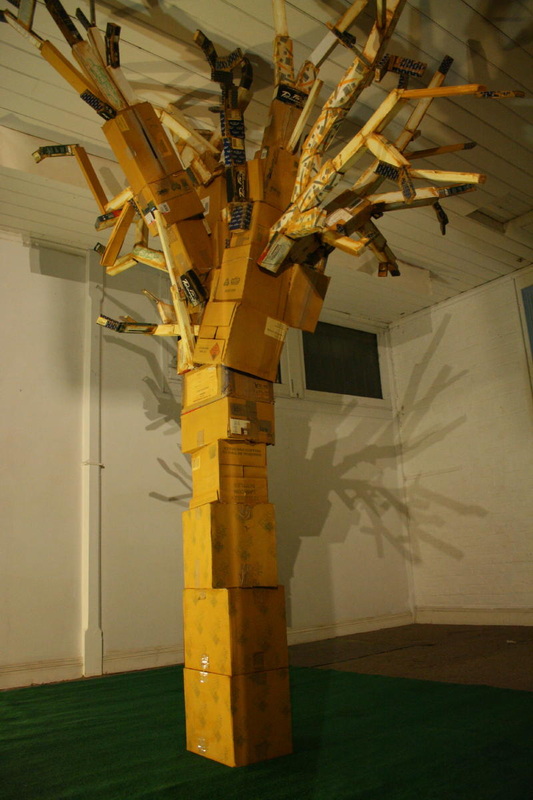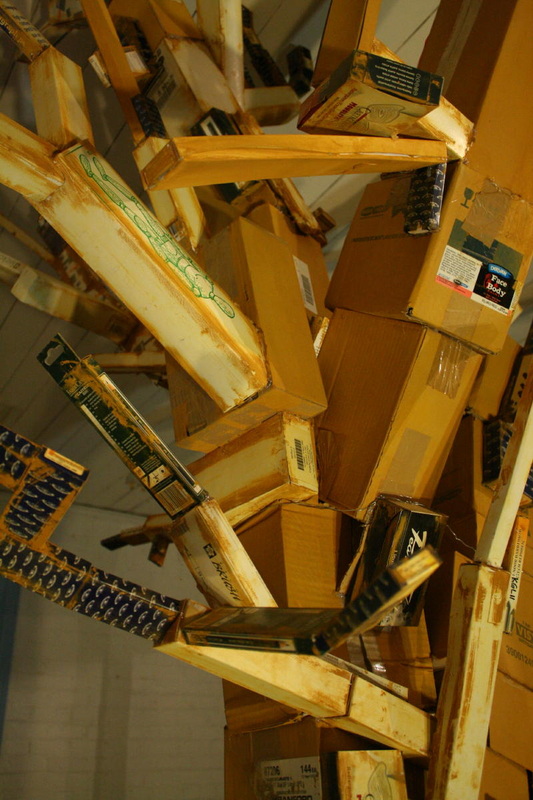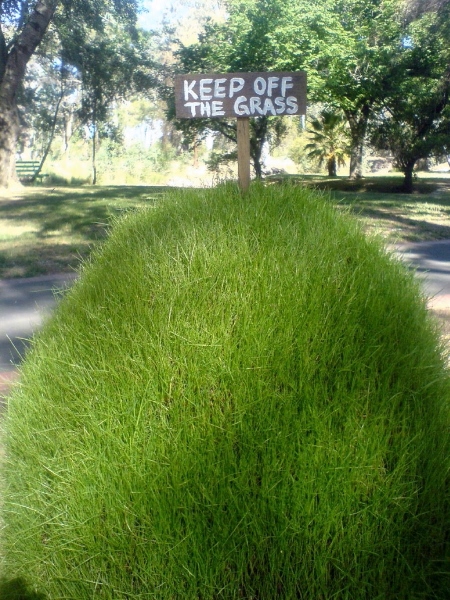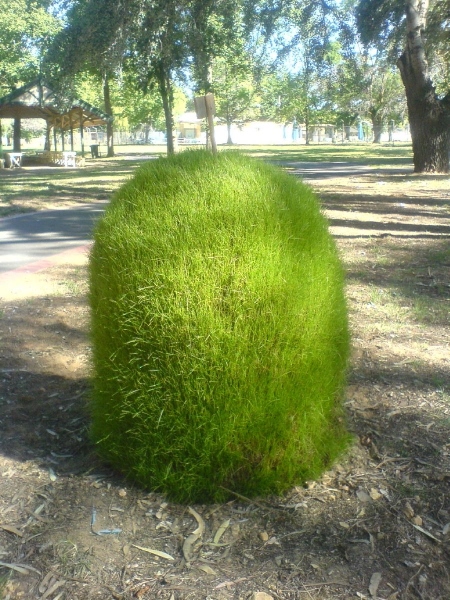Public Art
Now and Then
Artist Statement
As digital flat screens replace analogue boxes across the nation, consumers are dumping their TVs in desperate attempts to modernize. The craze has rendered working televisions redundant and recycle yards everywhere are now filling up with defunct boxes. This capitalist-driven consumer frenzy has largely been overlooked. Now & Then manifests to capture this pressing issue, to tell the story of now and then and to create the mother of all motherboards.
Now & Then sits in contemplation, reflecting upon a life once lived and pondering the present and its future to come. The artwork questions our sense of self, who we are and what is important to us in a rapidly changing world. It reflects upon Western Society’s consumer driven influence on our focus and choices, the increasing dependence on technologically driven entertainment, consumerism and technology as new religion as well as waste management and recycling options.
My work looks at impermanence and change, relative to both humans and the environment. Recycling also reflects these values and has been integral to the process both practically and ethically.
Landscape Gardeners
Landscape Gardeners is a post-colonial reflection upon how the Australian economy has shaped the Australian landscape. With an ecological outlook the work is an ironic depiction of the effect of the agricultural industry on the natural environment.. Intentionally contrasting with the urban industrial surrounds, the grass sheep juxtaposes the works form and medium creating an ironic displacement.
Rocks of all ages
As Australians, we all ‘have a go’ of designing our own world through our own backyards. On Sunday afternoons we mow the lawn – acting as green caretakers we mow down previous native sites to lead our agricultural and suburban existence. We design, plant and create our own Garden of Eden. God and man have had a go, but what if the world was designed by artists? .The landscape that we expect to appear may be somewhat altered.
How do you mow a rock formation with a lawn mower?
Rocks of all ages reflects human cultivation and manipulation of the landscape. An extreme or absurd reflection of our attempts to control nature and our surrounds. Art Land reinvents Human Land, juxtaposing the natural and man made. Nature is redesigned back into the urban landscape with a new way of viewing her possibilities.
How do you mow a rock formation with a lawn mower?
Rocks of all ages reflects human cultivation and manipulation of the landscape. An extreme or absurd reflection of our attempts to control nature and our surrounds. Art Land reinvents Human Land, juxtaposing the natural and man made. Nature is redesigned back into the urban landscape with a new way of viewing her possibilities.
The Grass is Green
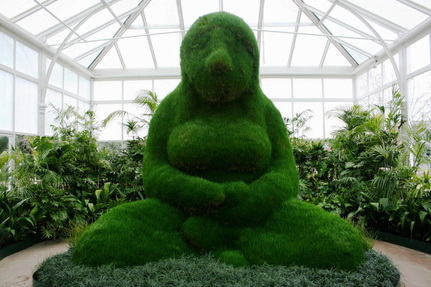
The Grass is Green
Bendigo Conservatory 2008
The Grass is Green is part of the One Woman-One Colour Installation Exhibition, which involves thirteen artists from the Bendigo Region and is being held throughout Bendigo in July 2008. Each artist has been assigned one colour to create a monochromatic installation embodying themes, senses and symbolism associated with that colour.
The Grass is Green will feature at the Bendigo Conservatory from July until September 2008.
Artist Statement
The colour green is a synthesis of both blue and yellow. Blue a symbol of water, and yellow a symbol of the sun photosynthesize to produce the green colour of nature.
Pop culture trains us to compete, to compare, to contrast. Envy, the colour of green, becomes fabric in our relations. ‘The grass is always
greener on the other side’ as we strive for what the other has. The antidote to envy is self-acceptance achieved through inward reflection.
There is no duality in this restful place, which is green of its own internal nature rather than the green of envy.
The Grass is Green reflects a synthesis of the self; a contemplative figure looks inward and meditates on its own natural growth. The calm relaxed pose of the figure and the soothing effect of the natural grass colour aim to create tranquillity and inspire self-acceptance.
The artwork has been constructed from welded steel and wire. It has an outer skin of soil that has been sown with grass seed. This will grow and evolve over the duration of the exhibition.
Part of the Landscape
Part of the landscape is a life-size sculpture of a kangaroo with a living skin of grass. Sprouted from native seed, the figure invokes questions of national identity and environmental sustainability. Reclining on one arm it relaxes on the lawn as part of the landscape in a typically Australian laid-back pose.
Christmas in the Conservatory
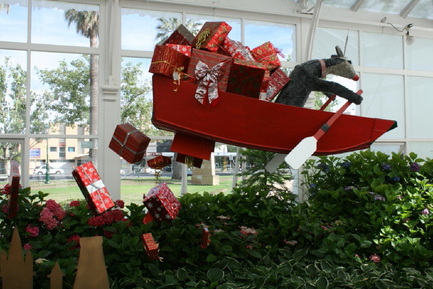
Christmas in the Conservatory
Bendigo 2011
Rudolf has made his way out from his Northern igloo passed the
glacial path and has now taken off flying high in his red boat across the green landscape below. Rowing his red sleigh boat, Rudolf releases the parcel drop and presents fall towards the township of Bendigo in time for Christmas.
"Hello Possums"
Green Seas
|
Green Seas White Hills Botanical Gardens, 2008 My work explores human nature and identity in a personal, national and worldly context through ironic takes on nature, culture and human perception. Grass as a medium creates a natural fabric; when applied to sculptural forms it further juxtaposes the natural and man made, creating a lively tension. |
Yellow Box Tree
My art practice deals with the duality and irony of life. This work reflects upon the apparent hypocrisy of living a conscious environmentally sustainable existence and inevitably being a part of greater society’s constraints.
Made from art supply boxes the installation reflects our local environment - the yellow box tree and our local consumer - the artist, reflecting the dichotomy of living environmentally conscious and sustaining an art practice and recognising ones part in the hypocrisy.
Paradoxically the tree is also a symbol of life and growth, representing the support of art in society. The Yellow Box Tree, bearing material brands used to express passions and personalities, also symbolises the artist who nurtures the soul of society and brings forth cultural livelihood.
Made from art supply boxes the installation reflects our local environment - the yellow box tree and our local consumer - the artist, reflecting the dichotomy of living environmentally conscious and sustaining an art practice and recognising ones part in the hypocrisy.
Paradoxically the tree is also a symbol of life and growth, representing the support of art in society. The Yellow Box Tree, bearing material brands used to express passions and personalities, also symbolises the artist who nurtures the soul of society and brings forth cultural livelihood.
Keep off the Grass
|
Keep off the Grass White Hills Botanic Gardens, 2008 Keep off the grass is an ironic take on nature culture conflict. It reflects how humans culturally appropriate nature and set themselves apart from it. The work plays on issues of human behavioural control and manipulation of the environment encompassing matters of sustainability. |
Sustainability depends ultimately on human awareness and willingness to dissolve conflict and work in tune with nature. A sense of humour goes along way in accepting our current environmental situation in order to make change for a renewable future.
